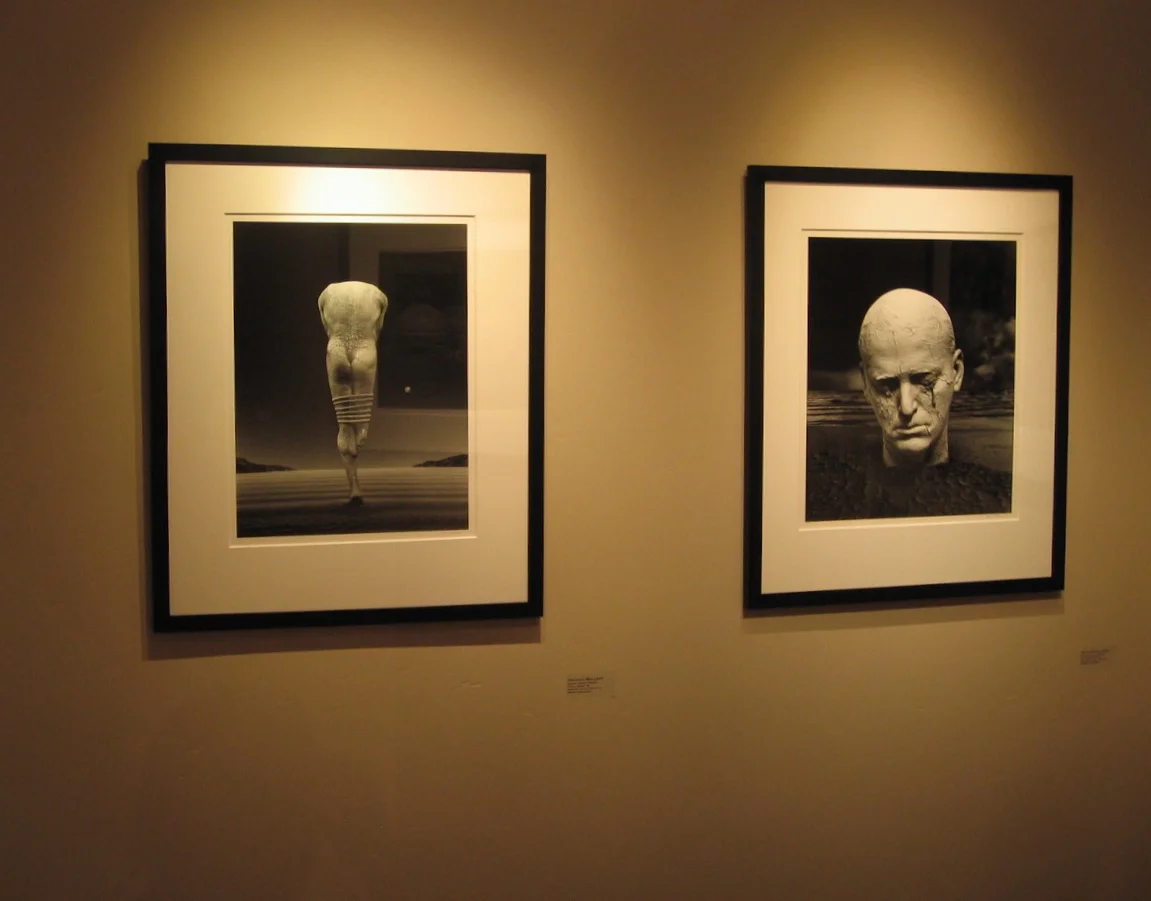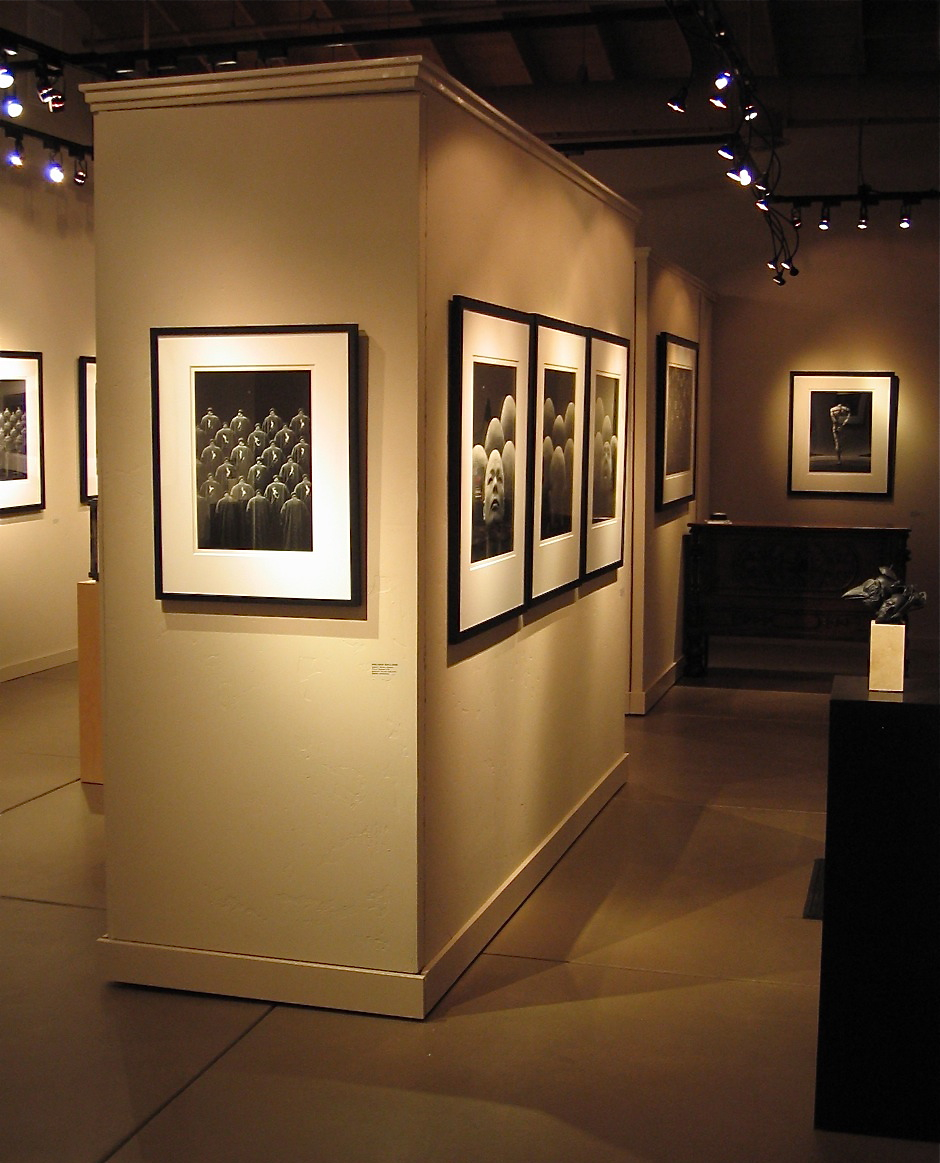




























Your Custom Text Here
In the stillest hours, the most private glances inward, or in the midst of submerging dreams, we catch a glimpse of the world reduced to essential forms and symbols. Through them we think of what it means to be alive; we question and intuit answers; we burrow within and reveal hidden depths. While dreaming, we conjure scenes of both peace and chaos, reuniting with loves and confronting demons; sometimes we soar over landscapes and masses below with the most uplifting freedom, and other times we fly to escape what we cannot consciously face. Ensconced in such private visions, we in a sense are all photographers, artists-as-witnesses, distilling in powerful and concrete images the elemental mysteries of life..
From these authentic moments Misha Gordin wrests and forges his provocative photography, an intuitive and visionary body of work that remains gathered and focused on the image of the human figure. His images originate from a “turning inward toward his soul,” as he states, toward a plane of reflection where personal experience intersects with universal themes of life and death. Garbed in the raiment of symbolism, his work distills basic, epochal impulses -- hope, doubt, fear, communion of man and the struggle for individuality and freedom -- and casts the personal into something uniform and archetypal.
For Gordin the human figure, alone or multiplied, and magnified as a vital force of nature, is at the center of the image -- and even the entire image -- and remains the primary conduit of expression. The faces of his figures rarely show, and yet we approach his work as a kind of portraiture, compelled to look and to recognize ourselves, to interpret the syntax and rhythms of the body. We recognize in it the perennial theme of the individ- ual in search of homeland and of self-definition, and interpret his figures as icons, fallen angels, mythic protagonists. But first and foremost, they stand as mortal beings, and the spiritual dimension of the work is matched, even heightened, by an intensely physical presence.
By concentrating on core motifs -- nocturnal sky and recesses of darkness, heads lowered in contemplation, the body in constriction -- Gordin lends his work a uniformity and a simplicity, while at the same time achieving a versatility and range of expression. This palette is developed through a sequence of thematic series entitled “Doubt” and “Crowd,” from which he yokes a kind of narrative of mankind, a layered allegory of our proximate hopes and fears and anxieties.
The work carries a quality of storytelling, but it also draws upon a host of other disciplines, from film to dance and sculpture. Images from the “Doubt” series remind me of Dore’s engravings for Dante, as well as the spellbound poses of Butoh dancers; those from “Crowd” evoke dramatic mise-en-scenes from Bergman or Dreyer, while also recalling the monumental sculpture of Rodin. This is photography that shuns the banal and straightforward, synthesizing influences and impressions into a seamless and uniquely personalized idiom, a taut balancing of dreamworld and reality.
(Excerpt from an essay by Paul LaRosa)
The work of Ted Gall is both fantastical and psychological. Through the use of allegory and metaphor, Gall conjures archetypal figures in a myriad of situations. The scale of the work ranges from intimate sculptures barely a few hands high to monumental pieces weighing several tons. A graduate of the Art Institue of Chicago and the American Academy of Art, Gall’s work can be found in dozens of corporate and private collections across the US.
In the stillest hours, the most private glances inward, or in the midst of submerging dreams, we catch a glimpse of the world reduced to essential forms and symbols. Through them we think of what it means to be alive; we question and intuit answers; we burrow within and reveal hidden depths. While dreaming, we conjure scenes of both peace and chaos, reuniting with loves and confronting demons; sometimes we soar over landscapes and masses below with the most uplifting freedom, and other times we fly to escape what we cannot consciously face. Ensconced in such private visions, we in a sense are all photographers, artists-as-witnesses, distilling in powerful and concrete images the elemental mysteries of life..
From these authentic moments Misha Gordin wrests and forges his provocative photography, an intuitive and visionary body of work that remains gathered and focused on the image of the human figure. His images originate from a “turning inward toward his soul,” as he states, toward a plane of reflection where personal experience intersects with universal themes of life and death. Garbed in the raiment of symbolism, his work distills basic, epochal impulses -- hope, doubt, fear, communion of man and the struggle for individuality and freedom -- and casts the personal into something uniform and archetypal.
For Gordin the human figure, alone or multiplied, and magnified as a vital force of nature, is at the center of the image -- and even the entire image -- and remains the primary conduit of expression. The faces of his figures rarely show, and yet we approach his work as a kind of portraiture, compelled to look and to recognize ourselves, to interpret the syntax and rhythms of the body. We recognize in it the perennial theme of the individ- ual in search of homeland and of self-definition, and interpret his figures as icons, fallen angels, mythic protagonists. But first and foremost, they stand as mortal beings, and the spiritual dimension of the work is matched, even heightened, by an intensely physical presence.
By concentrating on core motifs -- nocturnal sky and recesses of darkness, heads lowered in contemplation, the body in constriction -- Gordin lends his work a uniformity and a simplicity, while at the same time achieving a versatility and range of expression. This palette is developed through a sequence of thematic series entitled “Doubt” and “Crowd,” from which he yokes a kind of narrative of mankind, a layered allegory of our proximate hopes and fears and anxieties.
The work carries a quality of storytelling, but it also draws upon a host of other disciplines, from film to dance and sculpture. Images from the “Doubt” series remind me of Dore’s engravings for Dante, as well as the spellbound poses of Butoh dancers; those from “Crowd” evoke dramatic mise-en-scenes from Bergman or Dreyer, while also recalling the monumental sculpture of Rodin. This is photography that shuns the banal and straightforward, synthesizing influences and impressions into a seamless and uniquely personalized idiom, a taut balancing of dreamworld and reality.
(Excerpt from an essay by Paul LaRosa)
The work of Ted Gall is both fantastical and psychological. Through the use of allegory and metaphor, Gall conjures archetypal figures in a myriad of situations. The scale of the work ranges from intimate sculptures barely a few hands high to monumental pieces weighing several tons. A graduate of the Art Institue of Chicago and the American Academy of Art, Gall’s work can be found in dozens of corporate and private collections across the US.